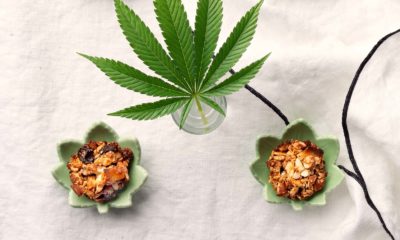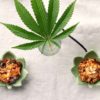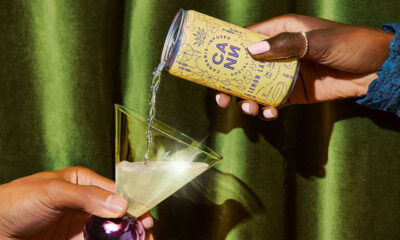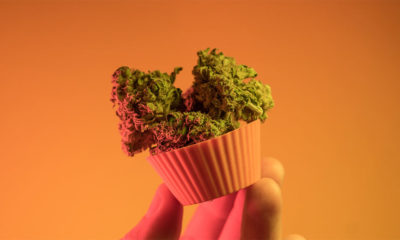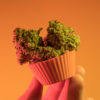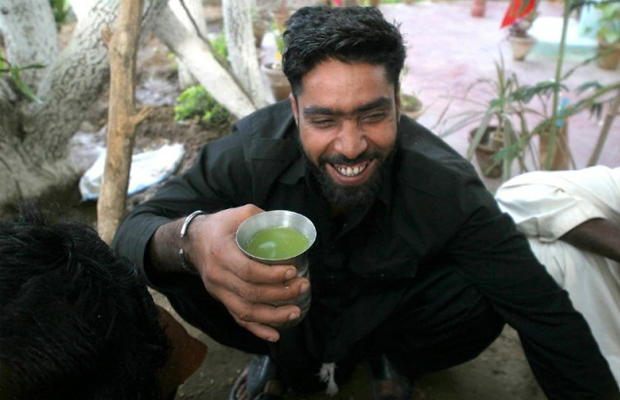
Edibles
When An Entire Country Gets High
On the topic of recreational substances, one just has to move the cursor back along the timeline of human existence as we know it and many potential candidates slowly begin to vie for the title of being the first to be consumed with the intent of getting high. A range of possible contenders come to mind: the legendary, sacred concoction of Ayahuasca from the tribal Amazonian cultures; the blood red wine, from the Greek and Roman eras; and the illegal intoxicant found in the poppy flower, opium. One of the closest competitors, if not the outright winner, is the cannabis-infused concoction of Bhang Thandai from the Indian sub-continent.
Bhang essentially consists of consuming dried and powdered leaves of the female cannabis plant mixed with native spices and milk, resulting in a noticeable and prominent haze that clouds the head for the rest of the day. Before booking tickets to India, bear in mind that Bhang Thandai, which literally means “marijuana leaf milkshake,” isn’t consumed every day. The Hindu festival of Holi is the only time of year when it’s brewed.
One among many cultures’ ways of symbolising the beginning of spring, Holi is celebrated in early March or late February, depending on lunar calendars. The day symbolizes a new beginning; wrongs are righted, debts are forgiven and relationships are mended. Also known as the festival of colors, the entire country celebrates by throwing colored dye powders and dyed water on one another while heavily under the influence of copious quantities of Bhang – all as an intrinsic, religious part of the celebrations. History is awash with countless myths regarding the history of Bhang’s correlation with Holi; whatever this may be, the two have certainly gone hand in hand for centuries. There is no Holi without Bhang.
The beverage is consumed by people from all strata of life, regardless of age or income, from sunrise to sunset. The wild marijuana plants aren’t very potent at all, but most recipes call for an ounce of plant matter (leaves and/or bud) per glass. It’s rare to see someone stop at a single glass. Naturally, the country slips under a blissful blanket of pleasant intoxication by noon. The high is initially relaxing and deceptively clear, soon followed by fits of laughter, brain fog and a heavy stone that goes right down to the bone.
To make it, a mix of almonds, cardamom, turmeric, jaggery, saffron and other spices are ground and mixed with ghee (clarified butter) and marijuana leaves to form a dark, aromatic paste. This is then thoroughly mixed with milk. The resulting sweet refreshment is an explosion of flavors, as the initial rush of spice gives way to the sweet, cool aftertaste. Glasses are dunked inside earthen pots filled with Bhang Thandai and handed to color-stained youngsters and seniors alike. No time is wasted in tilting the glass bottoms up; the Bhang is gulped and people return to take part in the rainbow of festivities.
The problem with all of this is that marijuana isn’t legal in India. What does the government have to say about all of this? The answer is: nothing – absolutely nothing. A large portion of the public knows that ganja is illegal and knows that Bhang clearly has psychoactive effects, but they’re completely unaware that they’re actually the same parts of the same plant. This isn’t limited to the rural majority of Indian population hovering around the poverty line; ironically, multi-millionaire businessmen and political figures alike are known to consume Bhang during Holi and the latter continue their strong, vocal stance against the use of marijuana as a recreational drug. How are millions of people unaware of the connection between Ganja and Bhang? Well, for starters, most of rural India where the populations are most dense doesn’t even have Internet access — so checking things out online isn’t an option.
The fact is that the government lacks the power to extricate an intrinsic part of religious celebration from the people; it’s simply too deeply embedded in history and culture to remove. As many scenarios in the world have shown us, the revocation of religious allowances causes mass hysteria and active opposition. The immense degree of outrage and revolt that this would cause is unpredictable, but the thought of it is enough to keep the government from prohibiting the open sale, distribution and consumption of Bhang.
There’s no mention of it in legal documents. There’s no age barrier or individual quantitative restriction. And there’s certainly nothing more frustrating to an informed, modern teenager than getting reprimanded for marijuana use while watching their parents get higher than the Eiffel Tower on pot shakes.
Have you ever tried bhang? Tell us about it in the comments.












